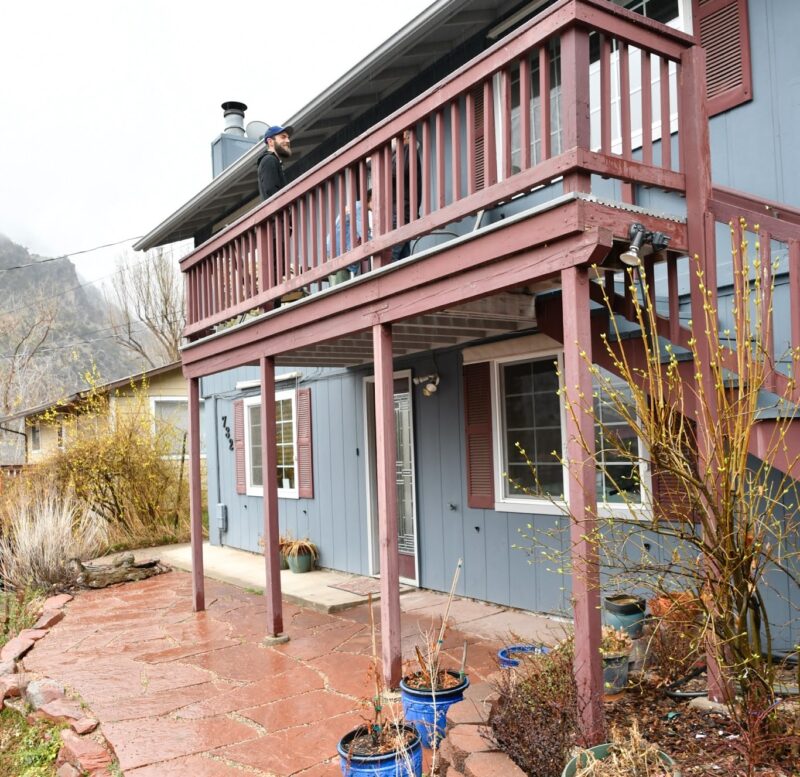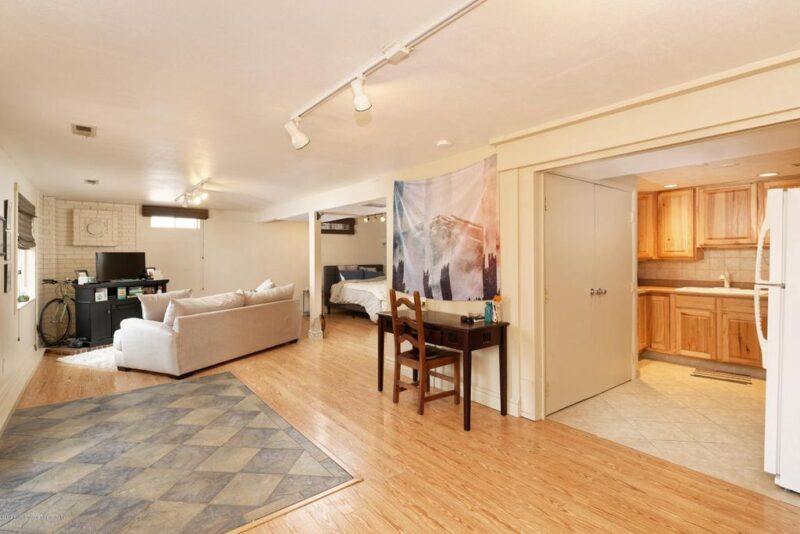In the spirit of coming clean for the holidays, I have a confession to make—I had a bandit ADU. (Earmuffs on please, local City employees.)
For those of you wondering, an ADU (Accessory Dwelling Unit) is a secondary, small rental unit that shares a lot with an existing single-family home. A bandit ADU is an ADU that is, well, not entirely permitted by the City. In short, it’s an ADU that’s on the naughty list.
Now, before you go ahead and call the housing police (or Santa) on me, let me explain the benefits of my ADU, and the challenges I faced in getting this permitted in my community.

Why My ADU Should be on the Nice List
- It’s naturally affordable. As a small unit inside an existing home, I can afford to keep rents low and still make the mortgage. For the affordable housing wonks out there, I keep rent around 80% AMI—meaning someone who makes 80% of the local median income (about $55k/year) can live here, and live here affordably. Note that this level of affordability is simply impossible with new construction without major subsidies.
- It’s good for the local economy. The income from the ADU helps offset some of my own housing costs, which allows me to keep living and working here. My wife and I both work for local non-profits, and when we’re not working, we love eating in local restaurants and bars, or shopping at our Main Street businesses. We’re good for our community and economy—and our ADU is the thing that keeps us from getting priced out of this place. On top of that, the low rent allows our tenants to save money, too. The local-ownership trend of ADU doesn’t just keep dollars in town—it keeps people in town.
- It’s walkable and environmentally friendly. By splitting an existing house in two, the previous owner created an entirely new home with minimal new materials, and virtually no landfill waste. Since the overall square-footage didn’t change, the utilities for the whole home are about the same, so living there is relatively light and low-impact. Best of all, it’s in a walkable location. So now instead of one family living there and walking to work, there are two who can contribute to our downtown’s vibrancy.
- It meets a growing demand. When my house was built in 1972, the average household in the US was about 3 people—which means my 10-house block housed about 30 people. Today, the average household is about 2.5 people, meaning my same 10-house block can only house about 25 people. Neighborhoods that aren’t slowly adding new units over time are losing neighbors due to shrinking household sizes alone. That means less people adding vibrancy and spending money in our community. My ADU accommodates this trend, and along with three more ADUs on my block, lets my neighborhood retain it’s most important asset: my neighbors.
So, with all of these benefits, why didn’t the previous owners get it permitted? Short answer: our local codes wouldn’t let them. Well, at least not until recently—but more on that later.

Why My ADU Was on the Naughty List
- Parking requirements. My house is on a hillside, and sits in a “hill-side preservation overlay zone” which called for ADUs to need one extra parking space. My house has space for three cars, and the code called for four.
- Public hearing approval. The “hill-side preservation zone” also called for ADUs to be approved at a public hearing, which would take time, and require written notice to the neighbors. The decision-making conditions of that hearing were not outlined in the code, so a homeowner would go in having no clue what conditions they would have to meet in order to be approved.
- Size requirements. On top of all of that, the code required the ADU to be less than half of the size of the main unit. The main unit in my house is 750 square feet, and the ADU (being the bottom floor) is the exact same size. This provision killed the likelihood of it getting approved altogether. And should the ADU have met all of those conditions, there would then be a $4,000 fee to cough up.
Some Holiday Spirit
It’s good to point something out here: the City wants more ADUs. They want more compact, affordable housing close to jobs and businesses. They believe in the benefits my ADU brings to our community—truly, they do. But, their own codes were not aligned with these goals and beliefs.
Fortunately, this is all changing. City staff and our council have been listening to folks from across town complain about all of these code barriers, and they’ve been slowly working to address them over the past few years.
The parking requirement was reduced. Check. The public hearing requirement went away. Check. Tandem parking was allowed. Check. The half-size requirement went away, allowing basement or in-house ADUs to be the same size as the main unit. Check. The $4,000 fee could be waived with a deed-restriction requiring the unit to be affordable, and be rented to someone working locally. Check, check, check, check, check.
Watching our local City staff and council tackling each barrier my ADU has faced since it was built in the 90s has been a slow, yet oddly exhilarating, multi-year experience. It’s a lot of decisions to make, most of them packed with details, caveats, tradeoffs, and nuance. But they’ve done it, and my ADU is now finally ready to get its permits.
I sent an email to set up a permitting appointment this morning. Nice list here we come.
A Call to Action
While it’s easy to villainize your local planners, staff, and councilors for your bad codes, it’s important to realize that those same broken codes probably frustrate them just as much (if not more) than they frustrate you. Changing codes takes finesse and political will beyond your town’s staff: it takes everyday folks like you and me asking the right questions and offering support for needed reforms. It takes buy-in and support from department heads and town managers and elected officials. And it also takes some clear goals for the future of housing in your community.
While this sounds like a ton of work, Community Builders is here to help.
To get your community back on the nice list, we’ll leave you with this gift under your tree:
Housing
|
Land Use


Helpful read, thanks and congrats!